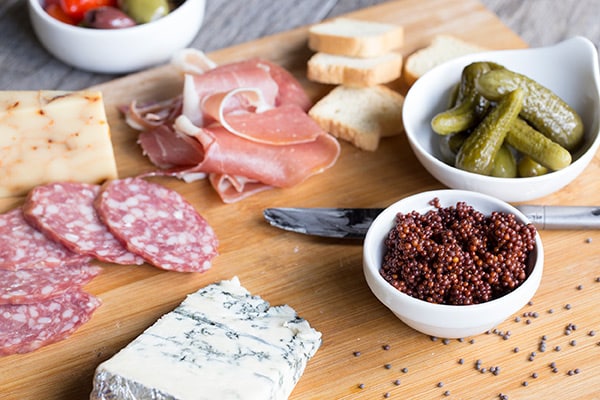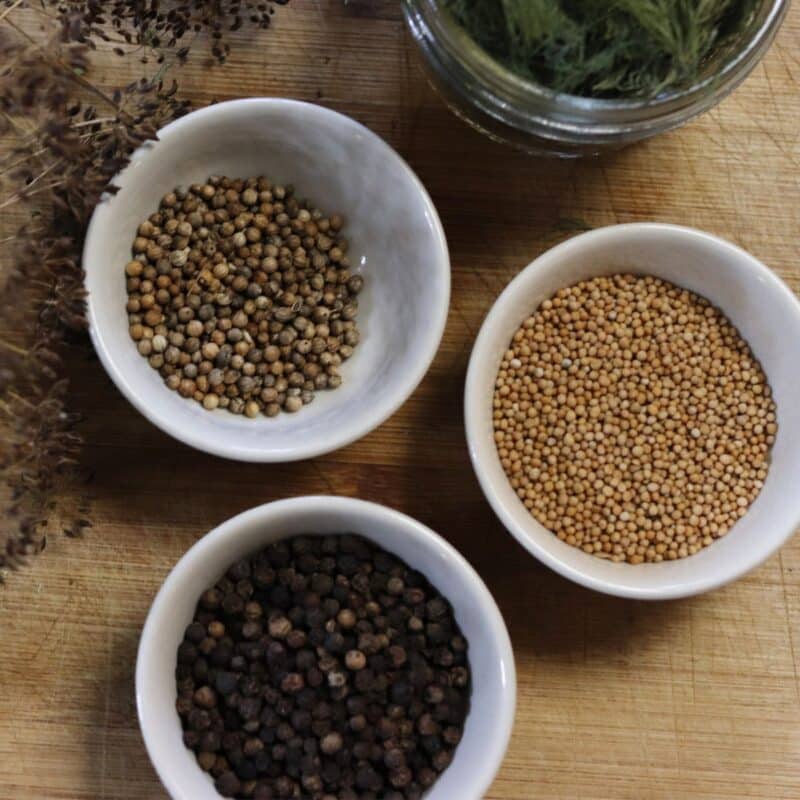Which mustard seed is best for pickle?

Choosing the right mustard seed variety for pickling is a nuanced decision that can significantly influence the flavor, spiciness, and overall character of the pickled creation. The debate often revolves around the selection between yellow and black mustard seeds, each offering distinct qualities that cater to different taste preferences and culinary traditions.
Yellow mustard seeds, with their mild and slightly sweet flavor profile, are a popular choice for pickling. The gentle heat they bring to the table is well-suited for those who prefer a milder kick in their pickled delights. Yellow mustard seeds complement the tanginess of vinegar or brine without overpowering the other flavors present in the pickling mixture. Their versatility makes them a go-to option for various pickled vegetables, from cucumbers to cauliflower and beyond.
One of the key advantages of using yellow mustard seeds in pickling is their ability to enhance the overall acidity of the brine without contributing excessive spiciness. This makes them an excellent choice for picklers who want to strike a balance, allowing the natural flavors of the vegetables to shine through while still benefiting from the subtle warmth and complexity that mustard seeds bring to the mix.
In traditional American dill pickles, yellow mustard seeds often play a supporting role, contributing to the nuanced flavor profile that accompanies the crispness of the cucumbers. The mildness of yellow mustard seeds allows them to integrate seamlessly with other spices like dill, garlic, and peppercorns, creating a harmonious blend that characterizes classic pickle recipes.
On the other end of the spectrum, black mustard seeds, with their bold and spicy nature, offer a more assertive kick to pickled creations. While black mustard seeds can be overpowering if used excessively, when employed judiciously, they can elevate pickles to new heights, providing a robust and piquant flavor that stands out in the jar.
Black mustard seeds are particularly favored in South Asian and Southeast Asian pickling traditions, where their intense spiciness adds a distinctive character to pickled mangoes, mixed vegetables, and other regional specialties. The heat from black mustard seeds complements the sweet and tangy notes of pickled items, creating a dynamic and flavorful experience for the palate.
In Indian cuisine, black mustard seeds are often tempered in hot oil and added to pickles as a finishing touch. This tempering process, known as “tadka” or “tarka,” releases the aromatic compounds of the seeds, intensifying their flavor and infusing the pickles with a depth that is synonymous with Indian pickling traditions.
The choice between yellow and black mustard seeds in pickling also extends to visual aesthetics. Yellow mustard seeds, with their soft and pale hue, add a subtle brightness to the pickling solution, creating visually appealing jars that showcase the vibrant colors of the vegetables. In contrast, black mustard seeds contribute a darker element, offering a visual contrast that can be particularly striking in certain pickled items.
In making the decision between yellow and black mustard seeds for pickling, individual taste preferences play a crucial role. If a more subdued spiciness and a delicate flavor are desired, yellow mustard seeds are the preferred choice. Their ability to enhance the overall pickling experience without dominating the taste makes them an excellent option for a wide range of pickled vegetables and fruits.
Conversely, those who relish a bolder and spicier kick in their pickles may find black mustard seeds to be the ideal companion. The robust flavor of black mustard seeds can add a layer of complexity and intensity, making pickles that stand out with a fiery and assertive character.
Experimentation is key when deciding which mustard seed variety to use in pickling. Some picklers even choose to combine both yellow and black mustard seeds to strike a balance between mildness and spiciness, creating a unique flavor profile that caters to diverse preferences. This blending of mustard seed varieties allows for a personalized touch, allowing picklers to tailor their creations to suit their taste and the specific characteristics of the ingredients they are pickling.
The decision to choose between yellow and black mustard seeds in pickling is also influenced by regional culinary traditions and the types of pickled items one aims to create. For instance, in European pickling traditions, yellow mustard seeds are commonly used in classics like bread and butter pickles, where their mildness complements the sweetness of the brine. The yellow seeds integrate seamlessly with ingredients like onions and cucumbers, providing a delicate flavor that enhances the overall pickling experience.
In Middle Eastern pickling, black mustard seeds may find a place in the preparation of torshi, a type of pickled vegetable dish. The bold and pungent flavor of black mustard seeds can stand up to the robust spices and herbs often used in Middle Eastern pickling recipes, creating pickled items with a depth and complexity that delight the taste buds.
Mustard seeds, irrespective of their color, are known to contain natural compounds such as allyl isothiocyanate, which have antimicrobial properties. This makes them not just flavorful additions to pickles but also potential contributors to the preservation process, helping to extend the shelf life of pickled items. The antimicrobial properties of mustard seeds have been recognized in various traditional pickling practices as a natural means of enhancing the longevity of pickled foods.
When considering mustard seeds for pickling, it’s essential to understand that the seeds themselves don’t solely determine the overall taste of the pickles. Other factors, such as the choice of vinegar, the selection of spices and herbs, and the freshness of the vegetables or fruits being pickled, all contribute to the final flavor profile. Mustard seeds, whether yellow or black, should be viewed as one component within the broader symphony of flavors that make pickling an art form.
While yellow and black mustard seeds are the most commonly encountered varieties, brown mustard seeds also deserve mention. Falling between the mildness of yellow and the spiciness of black, brown mustard seeds offer a middle ground in terms of flavor intensity. Some picklers prefer brown mustard seeds when they want a bit more kick than yellow seeds provide but without the intense heat of black seeds.
Another factor to consider in the pickling process is whether to use whole mustard seeds or ground mustard. Whole seeds impart a subtle crunch to the pickles and release their flavor more gradually over time. Ground mustard, on the other hand, can lead to a more immediate infusion of flavor but may result in a slightly different texture. The choice between whole and ground mustard seeds is a matter of personal preference and the desired outcome for the pickled items.
In summary, the decision of whether to use yellow or black mustard seeds for pickling involves a nuanced consideration of flavor preferences, regional traditions, and the specific qualities one seeks in the end product. Both varieties offer a spectrum of possibilities, allowing picklers to tailor their creations to suit individual tastes and culinary goals. Mustard seeds, with their rich history in pickling traditions worldwide, continue to be a key player in the art of preserving and enhancing the flavors of seasonal produce. Whether adorning a classic dill pickle or contributing to the complex spices of a South Asian achar, mustard seeds, in all their varieties, remain an essential and dynamic component in the world of pickling.
FAQ:
1. Which mustard seed is best for mild-flavored pickles?
Yellow mustard seeds are ideal for mild-flavored pickles, providing a subtle kick without overpowering the overall taste.
2. Can I combine yellow and black mustard seeds in pickling?
Certainly! Combining both varieties allows for a balanced flavor profile, catering to those who enjoy both mild and spicier pickles.
3. Are brown mustard seeds a good compromise for pickling?
Yes, brown mustard seeds offer a middle ground between the mildness of yellow and the spiciness of black, providing a unique flavor intensity.
4. How do I temper mustard seeds for pickling?
Tempering mustard seeds involves heating them in hot oil until they pop, releasing their aroma. This technique is common in Indian pickling traditions.
5. Can I use ground mustard instead of whole seeds for pickling?
Yes, both whole and ground mustard seeds can be used in pickling. Whole seeds contribute a subtle crunch, while ground mustard imparts immediate flavor.
6. Do mustard seeds contribute to the preservation of pickles?
Yes, mustard seeds contain natural compounds with antimicrobial properties, contributing to the preservation process and extending the shelf life of pickled items.
7. In which regional pickling traditions are black mustard seeds commonly used?
Black mustard seeds are prevalent in South Asian and Southeast Asian pickling traditions, adding a bold and spicy flavor to regional specialties.
8. What visual impact do mustard seeds have in pickling?
Yellow mustard seeds add a subtle brightness to pickling solutions, while black mustard seeds contribute a darker element, creating visual contrast in pickled items.
9. Can mustard seeds be used in European-style pickles?
Yes, yellow mustard seeds are commonly used in European pickling traditions, particularly in classics like bread and butter pickles.
10. How do mustard seeds complement Middle Eastern pickling recipes?
Black mustard seeds can stand up to the robust spices and herbs used in Middle Eastern pickling, adding depth and complexity to pickled items like torshi.
Related Posts
Exploring the role of mustard seeds in pickling and preserving foods?
-
Posted by
akshita aishwarya
- 1 comment



